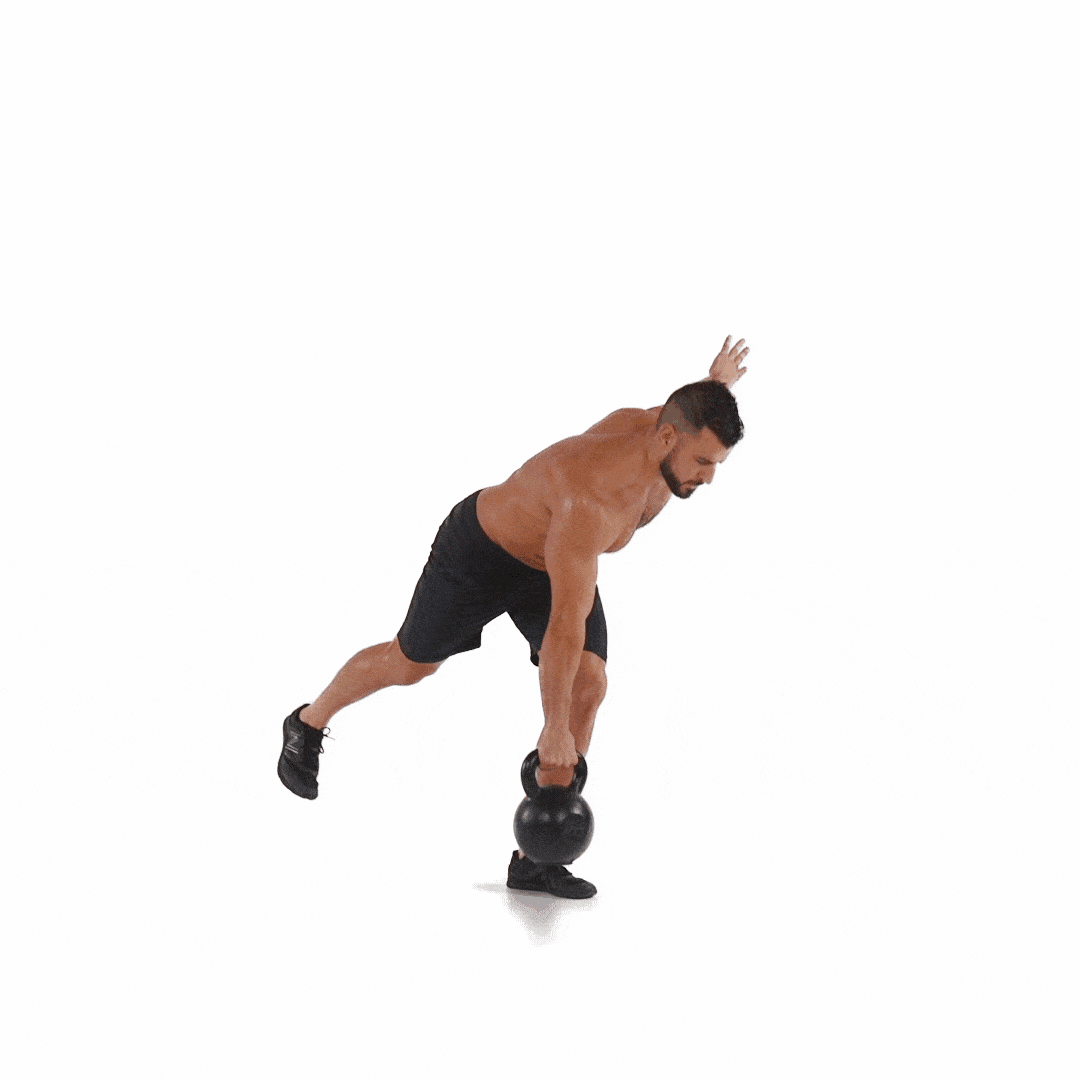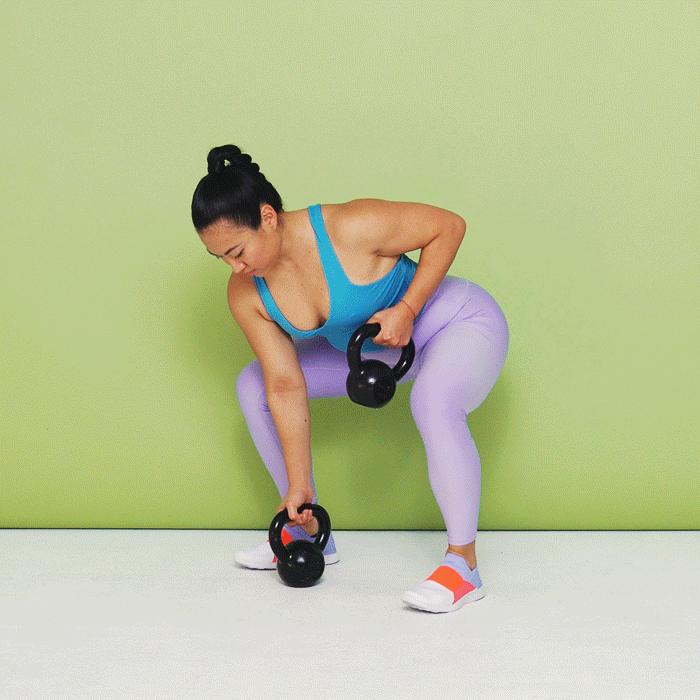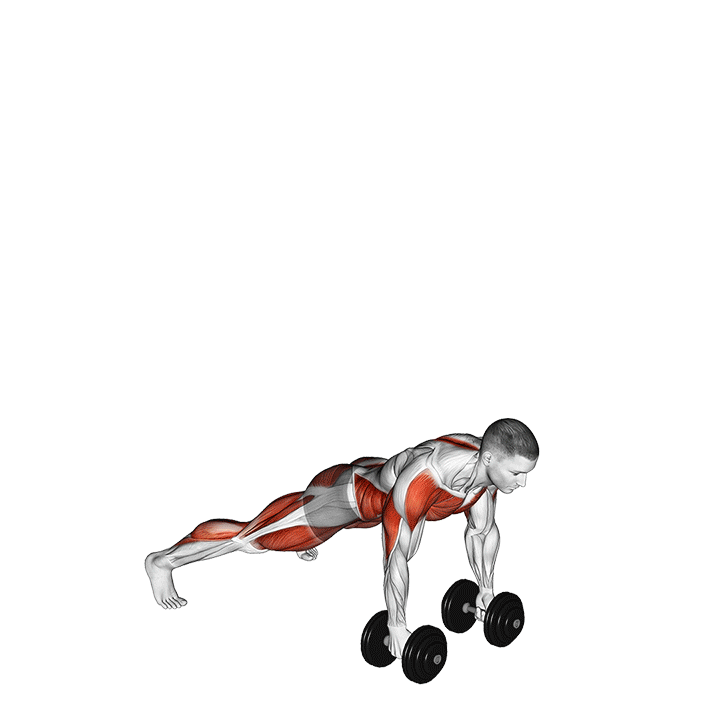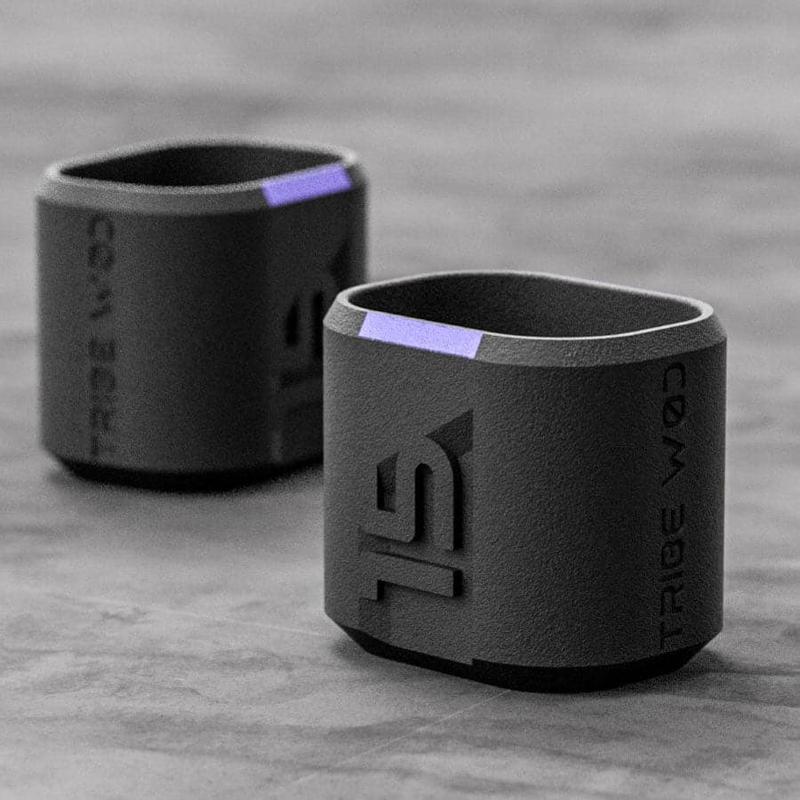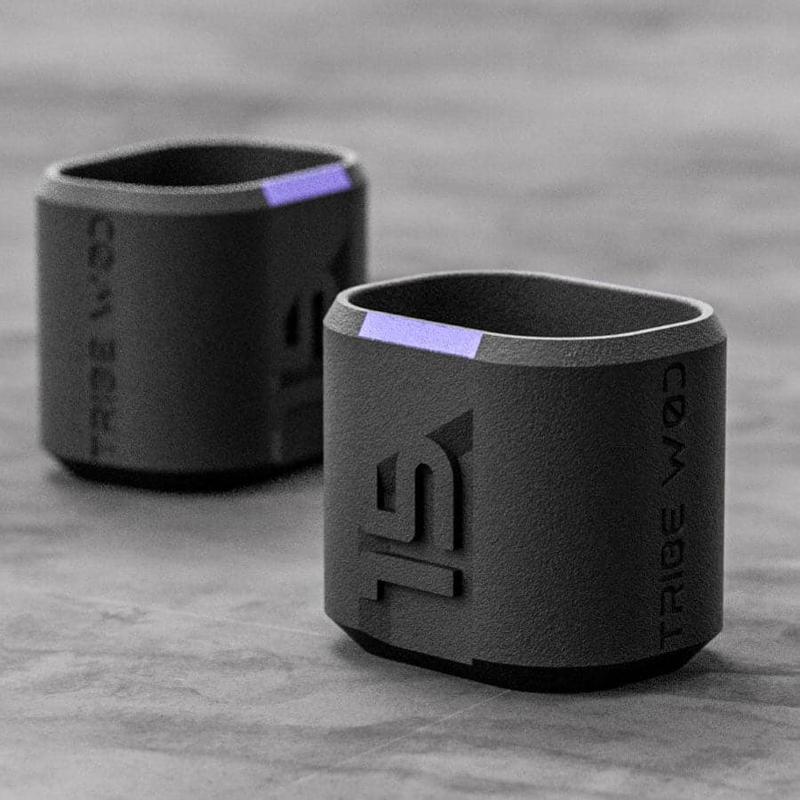Single-leg deadlifts are a powerful exercise that can elevate your fitness routine by targeting key muscle groups, enhancing balance, and improving functional strength.
Single-leg deadlifts are not only effective for building strength but also play a crucial role in enhancing balance and stability. By focusing on unilateral movements, this exercise challenges your body's ability to stabilize and engage multiple muscle groups simultaneously, which translates to improved coordination and functional strength. Whether you're aiming to prevent injury, enhance athletic performance, or simply diversify your workout routine, mastering the nuances of single-leg deadlifts can unlock a range of physical benefits that extend beyond the gym. Let's explore the proper technique, variations, and practical applications of this dynamic exercise to help you maximize its potential in achieving your fitness goals.
In this comprehensive guide, we'll delve into the nuances of single-leg deadlifts, exploring proper technique, the benefits of various forms, and how to incorporate them effectively into your workouts.
What is a Single-Leg Deadlift?
The single-leg deadlift is a compound exercise that emphasizes the posterior chain muscles, including the hamstrings, glutes, and lower back, while also activating the core for stability. This unilateral movement requires you to stand on one leg throughout the exercise, which enhances balance and proprioception. Unlike conventional deadlifts, the single-leg variation places a greater demand on stabilizing muscles and can help address muscle imbalances between the left and right sides of the body. By incorporating single-leg deadlifts into your routine, you'll not only strengthen key muscle groups but also improve overall coordination and functional strength, making it a valuable addition to any fitness regimen.
What is the difference between a traditional and single-leg deadlift?
The difference between a traditional deadlift and a single-leg deadlift lies primarily in the stance and movement pattern involved in each exercise:
|
Aspect |
Traditional Deadlift |
Single-Leg Deadlift |
|
Stance |
Feet shoulder-width apart, both feet on the ground |
Standing on one leg, with the other leg extended behind for balance |
|
Movement |
Simultaneous hip and knee bending to lower the torso and lift the weight |
Hinging at the hips while maintaining a neutral spine, focusing on one leg for balance and support |
|
Muscles Targeted |
Hamstrings, glutes, lower back, traps |
Hamstrings, glutes, lower back, core |
|
Stability |
Stable base of support with both feet grounded |
Requires greater balance and stability due to unilateral stance |
|
Unilateral Strength |
N/A |
Addresses muscle imbalances by focusing on one leg at a time |
|
Balance and Proprioception |
Standard balance with two feet |
Challenges balance and proprioception |
|
Functional Fitness |
Effective for strength and muscle mass |
Mimics real-life movements, beneficial for functional fitness |
|
Injury Prevention |
Promotes overall strength and power |
Enhances coordination and stability, reducing injury risk |
Above table highlights the key differences between traditional deadlifts and single-leg deadlifts, focusing on their respective stances, movements, muscle targeting, stability requirements, and functional fitness benefits. Incorporating both variations into a fitness routine can provide comprehensive benefits for overall strength, balance, and injury prevention. Choose the exercise that aligns best with your fitness goals and preferences to optimise your workout routine.
Technique and How to Perform
Mastering the technique of the single-leg deadlift is essential for maximising its effectiveness and preventing injury. Here's a detailed breakdown of the proper technique and step-by-step instructions on how to perform this exercise correctly:
Starting Position
Stand Tall with Feet Hip-Width Apart
- Begin by standing upright with your feet positioned hip-width apart.
- Ensure your weight is evenly distributed between both feet.
Shift Your Weight Onto One Leg
- Slowly transfer your body weight onto one leg while maintaining a slight bend in the knee of the standing leg.
- Keep your core engaged to stabilise your body.
Execution
Hinge at the Hips
- Initiate the movement by hinging at the hips while keeping your back straight and chest lifted.
- Maintain a neutral spine throughout the entire exercise to prevent rounding or arching of the back.
Extend the Non-Weight-Bearing Leg Back
- Simultaneously extend the non-weight-bearing leg straight back behind you.
- The extended leg should be in line with your torso, forming a straight line from head to heel.
Lower Your Torso
- Continue to hinge at the hips until your torso is parallel to the ground.
- Avoid dropping the chest too low; focus on maintaining a strong and stable position.
Engage Your Glutes and Hamstrings
- To return to the starting position, drive through the heel of the standing leg.
- Engage your glutes and hamstrings to pull yourself back up to the upright position.
Key Points to Remember
- Keep a slight bend in the knee of the standing leg throughout the movement to prevent hyperextension.
- Maintain a strong core and neutral spine alignment to protect your lower back.
- Focus on balance and stability by activating the muscles of the standing leg and core.
- Control the descent and ascent of the movement to fully engage the targeted muscles.
Common Mistakes to avoid while Performing Single-Leg Deadlift
Mastering the single-leg deadlift requires attention to detail and a focus on proper form to ensure safety and effectiveness. Here are some common mistakes to avoid and helpful tips to enhance your performance of the single-leg deadlift:
Rounded Back
- Mistake, Allowing the back to round during the movement, which places excessive stress on the spine and increases the risk of injury.
- Correction, Maintain a neutral spine throughout the exercise by engaging the core muscles and keeping the chest lifted. Imagine a straight line from your head to your tailbone.
Locked Knee
- Mistake, Fully extending the knee of the standing leg, which can lead to hyperextension and strain on the joint.
- Correction, Keep a soft bend in the knee of the standing leg to maintain stability and protect the joint. Focus on maintaining tension in the muscles rather than relying on joint locking.
Lack of Balance
- Mistake, Neglecting to prioritise balance and stability during the exercise, leading to wobbling or loss of control.
- Correction, Concentrate on stability by engaging the core muscles and focusing on a fixed point in front of you. Start practising the movement without weights to improve balance before progressing to weighted variations.
Tips for Proper Execution
Start Light
- Begin with bodyweight single-leg deadlifts to master the movement pattern and ensure proper form before adding external resistance.
Engage Core Muscles
- Activate your core throughout the exercise to stabilise your torso and maintain a neutral spine.
Controlled Movement
- Focus on a slow and controlled descent, maintaining tension in the targeted muscles.
- Avoid using momentum to swing the leg or torso; instead, emphasise muscular control and engagement.
Practice Balance Drills
- Incorporate balance exercises and drills into your warm-up routine to improve stability and proprioception, which are essential for single-leg exercises.
Use a Mirror or Video Feedback
- Utilise visual feedback, such as a mirror or video recording, to monitor your form and identify any areas of improvement.
By addressing common mistakes and implementing these tips, you can optimise your performance of the single-leg deadlift and maximise its benefits for strength, stability, and overall fitness. Consistent practice and attention to detail will help you progress safely and effectively in incorporating this challenging exercise into your workout routine. If you have specific concerns or questions about technique, consider consulting with a certified fitness professional for personalised guidance.
Benefits of Single-Leg Deadlifts
The benefits of incorporating single-leg deadlifts into your fitness routine are extensive, ranging from improved balance and stability to enhanced strength and functional movement patterns. Here's a deeper dive into the specific advantages of performing single-leg deadlifts:
Improved Balance and Stability
Single-leg deadlifts are effective for challenging balance through unilateral (one-legged) stability, engaging key stabilising muscles. This exercise also enhances proprioception, which is your body's awareness of its position in space and how it responds to movement. As you perform single-leg deadlifts, the synergy between your core muscles and lower body muscles promotes overall stability, contributing to improved balance and functional strength in daily activities. This exercise not only targets specific muscle groups but also enhances coordination and body awareness, leading to greater overall fitness and movement efficiency.
Increased Lower Body Strength
Single-leg deadlifts are highly effective for targeting key muscle groups including the hamstrings, glutes, and lower back. This exercise emphasises unilateral strength, helping to address muscle imbalances and strengthen each leg individually. By incorporating resistance such as dumbbells or kettlebells, you can progressively enhance lower body strength, leading to improved muscular endurance and overall performance in various activities. Regular practice of single-leg deadlifts with proper form and progressive overload can contribute to balanced muscle development and functional fitness.
Functional Movement Patterns
Performing single-leg deadlifts replicates essential daily movements like bending, lifting, and reaching, making it a highly functional exercise. By incorporating these functional movement patterns into your workout routine, you can enhance your ability to perform daily tasks more efficiently and with a lower risk of injury. This exercise not only strengthens key muscle groups but also improves overall coordination and proprioception, translating to improved movement quality in everyday life.
Core Activation
Single-leg deadlifts demand significant core activation to stabilize the body throughout the movement. By maintaining proper form, this exercise engages deep core muscles like the transverse abdominis and obliques, resulting in improved overall core strength and stability. The emphasis on core engagement during single-leg deadlifts not only enhances performance but also contributes to better posture and reduced risk of injury in daily activities.
Variations of Single-Leg Deadlifts
Single-Leg Deadlift with Dumbbell or Kettlebell
How to Do It
- Stand on one leg with a slight bend in the knee and hold a dumbbell or kettlebell in one or both hands.
- Hinge at the hips while extending the non-weight-bearing leg behind you, lowering the weight towards the ground while maintaining a neutral spine.
- Engage your glutes and hamstrings to return to the starting position, focusing on balance and stability throughout the movement.
Benefits
- Increases resistance to target the hamstrings, glutes, and lower back more effectively.
- Enhances core engagement and stability due to the added weight, promoting overall strength development.
- Improves balance and proprioception by challenging unilateral stability and coordination.
Assisted Single-Leg Deadlift
How to Do It
- Use a TRX suspension trainer or hold onto a stable surface (e.g., wall, railing) with one hand for support.
- Stand on one leg and hinge at the hips, extending the non-weight-bearing leg behind you while lowering your torso forward.
- Use the support to assist with balance and stability during the movement, focusing on maintaining proper form.
Benefits
- Helps beginners or those with balance issues to perform the single-leg deadlift with proper technique.
- Provides assistance for stability, allowing individuals to gradually build strength and confidence in the exercise.
- Promotes muscle engagement and coordination while reducing the risk of falls or injury during the movement.
Pistol Squat to Single-Leg Deadlift
How to Do It
- Perform a pistol squat on one leg, lowering your body down with the other leg extended in front.
- As you rise back up from the pistol squat, transition into a single-leg deadlift by hinging at the hips and extending the non-weight-bearing leg behind you.
- Maintain control and balance throughout the combined movement, focusing on fluidity and coordination.
Benefits
- Combines two challenging exercises to target multiple muscle groups in the lower body and core.
- Enhances balance, strength, and mobility through a seamless transition between movements.
- Provides a high-intensity workout that challenges both strength and coordination, ideal for advanced fitness enthusiasts.
Incorporating these variations into your workout routine can add diversity and intensity to your training regimen, allowing you to progressively challenge your balance, strength, and overall fitness. Start with lighter weights or assisted variations to master the technique before advancing to more challenging variations that require greater balance and stability. Always prioritise proper form and listen to your body's cues to prevent injury and optimise the effectiveness of each exercise.
Incorporating Single-Leg Deadlifts into Your Workout Routine
Stand-Alone Exercise
- Incorporate single-leg deadlifts into your workout routine as a standalone exercise to target and strengthen the hamstrings, glutes, and core muscles.
- Perform multiple sets (e.g., 3-4 sets) of single-leg deadlifts with a moderate number of repetitions (e.g., 8-12 repetitions per leg) to build strength and endurance in the targeted muscle groups.
Supersets and Circuits
- Combine single-leg deadlifts with complementary exercises such as lunges, squats, or core movements to create supersets or circuits.
- Incorporating single-leg deadlifts into supersets or circuits allows for a comprehensive full-body workout, engaging multiple muscle groups and promoting cardiovascular endurance.
Progressive Overload
- Continuously challenge your muscles by progressively increasing the weight used during single-leg deadlifts.
- Implementing progressive overload stimulates muscle growth and adaptation, leading to increased strength and functional capacity over time.
By utilising single-leg deadlifts as a stand-alone exercise or incorporating them into supersets and circuits, you can optimise your workout routine to target specific muscle groups and achieve comprehensive strength and conditioning. Additionally, applying progressive overload ensures ongoing progress and adaptation, supporting continuous improvements in muscle strength, endurance, and overall fitness. Adjust the intensity and volume of single-leg deadlifts based on your fitness level and goals to maximise the benefits of this versatile exercise.
Frequently asked questions about Single Leg Deadlift
Q.What do single-leg deadlifts work?
A.Single-leg deadlifts are a unilateral exercise that primarily works the posterior chain muscles, including the hamstrings, glutes, and lower back. They also engage the core muscles, such as the obliques and abdominals, to maintain balance and stability throughout the movement. Additionally, single-leg deadlifts work the quadriceps, calves, and upper back muscles to a lesser degree.
Q.Do single-leg deadlifts grow glutes?
A.Yes, single-leg deadlifts are an excellent exercise for growing and strengthening the glutes. By performing the movement on one leg, the glutes of the working leg must work harder to stabilise the hip joint and extend the hip during the movement. This increased demand on the glutes can lead to significant muscle growth and development over time, particularly in the gluteus maximus.
Q.What is a good weight for a single-leg deadlift?
A.The appropriate weight for single-leg deadlifts will vary depending on an individual's strength level, experience, and goals. Generally, it's recommended to start with a lighter weight, such as a dumbbell or kettlebell, and gradually increase the load as you become more proficient with the movement. For beginners, a weight between 10-20% of your body weight can be a good starting point. More advanced lifters may work up to weights ranging from 25-50% of their traditional bilateral deadlift weight.
Q.Are single-leg deadlifts worth it?
A.Yes, single-leg deadlifts are definitely worth incorporating into your exercise routine for several reasons:
- Unilateral strength development: By working one leg at a time, single-leg deadlifts can help address muscular imbalances and ensure equal strength and development on both sides of the body.
- Core and balance training: The need to maintain balance on one leg during the movement provides an excellent challenge for the core muscles and improves overall stability and proprioception.
- Functional carryover: The single-leg deadlift mimics everyday movements and activities that require single-leg stability, such as walking, climbing stairs, or running, making it a highly functional exercise.
- Injury prevention: By strengthening the posterior chain, core, and improving balance, single-leg deadlifts can help reduce the risk of lower back, knee, and other injuries, especially in athletic populations.
- Variety and progression: Single-leg deadlifts offer a challenging variation to traditional bilateral deadlifts, adding variety to your training and allowing for continued progression as you become stronger.
While single-leg deadlifts can be challenging, especially for beginners, they offer numerous benefits for overall strength, muscle development, and functional fitness when performed with proper form and progressive overload.
Workout Plan for Lower Body with Single-Leg Daedlift
Here is a 1-week workout plan that incorporates single-leg deadlifts along with other exercises to create a well-rounded fitness routine. This plan targets different muscle groups and includes variations of single-leg deadlifts for added variety and progression.
Day 1: Lower Body Strength
- Warm-up: Dynamic stretching (leg swings, hip circles) and 5 minutes of light cardio (e.g., brisk walking)
- Workout:
- Back Squats: 3 sets of 10 reps
- Romanian Deadlifts: 3 sets of 12 reps
- Single-Leg Deadlifts (with dumbbells): 3 sets of 10 reps per leg
- Walking Lunges: 3 sets of 20 steps (10 steps per leg)
- Cool Down: Stretching for lower body muscles (hamstrings, quadriceps, calves)
Day 2: Upper Body and Core
- Warm-up: Jumping jacks and arm circles
- Workout:
- Push-Ups: 3 sets of 12 reps
- Pull-Ups or Assisted Pull-Ups: 3 sets of 8-10 reps
- Plank Variations (front plank, side planks): Hold each for 30-60 seconds
- Single-Leg Deadlifts (with kettlebell): 3 sets of 8 reps per leg
- Cool Down: Static stretching for chest, back, and core muscles
Day 3: Cardio and Mobility
- Warm-up: Light jogging or jump rope (5-10 minutes)
- Workout:
- Perform 20 minutes of steady-state cardio (e.g., running, cycling, or rowing)
- Dynamic stretching and mobility exercises (e.g., leg swings, shoulder circles)
- Cool Down: Foam rolling or self-myofascial release
Day 4: Active Recovery
- Activities: Yoga or Pilates session focused on flexibility and mobility
Day 5: Full-Body Strength
- Warm-up: Dynamic stretching and light cardio
- Workout:
- Deadlifts (conventional or sumo): 3 sets of 8 reps
- Dumbbell Bench Press: 3 sets of 10 reps
- Russian Twists: 3 sets of 20 reps (each side)
- Single-Leg Deadlifts (bodyweight): 3 sets of 12 reps per leg
- Cool Down: Stretching for all major muscle groups
Day 6: Lower Body Focus
- Warm-up: Foam rolling or mobility exercises
- Workout:
- Bulgarian Split Squats: 3 sets of 12 reps per leg
- Glute Bridges: 3 sets of 15 reps
- Side Lunges: 3 sets of 12 reps per leg
- Single-Leg Deadlifts (with barbell): 4 sets of 6-8 reps per leg
- Cool Down: Stretching and deep breathing exercises
Day 7: Rest and Recovery
- Activities: Rest day or light activity (e.g., walking, gentle stretching)
Important Tips
- Progressive Overload, Increase weights or repetitions gradually to challenge your muscles.
- Proper Form, Focus on maintaining proper form during all exercises, especially single-leg deadlifts.
- Recovery, Allow time for rest and recovery between workouts to prevent overtraining and promote muscle repair.
- Nutrition:, Fuel your body with nutritious foods and stay hydrated to support your workouts and recovery.
This 1-week workout plan provides a balanced combination of strength training, cardio, mobility work, and recovery to help you improve overall fitness and achieve your fitness goals. Adjust the exercises and intensity based on your fitness level and listen to your body's feedback throughout the week.
Conclusion
In conclusion, single-leg deadlifts are a highly effective exercise for enhancing lower body strength, balance, stability, and overall functional fitness. Whether performed as a stand-alone exercise or integrated into supersets and circuits, single-leg deadlifts target key muscle groups including the hamstrings, glutes, and core, while also improving proprioception and coordination. By incorporating progressive overload and varying the execution of single-leg deadlifts with different equipment or variations, individuals can continuously challenge their muscles and promote growth and adaptation over time. Including single-leg deadlifts in your workout routine offers a versatile and rewarding way to build strength, improve mobility, and enhance overall physical performance for various fitness goals.
Remember to prioritise form and start with lighter weights before progressing to heavier loads. Consult with a certified fitness professional if you have any concerns about technique or suitability. Embrace the challenge of single-leg deadlifts and enjoy the benefits they bring to your fitness journey.
References:
- Mayo Clinic. (2022). Strength training: Get stronger, leaner, healthier.
- American Council on Exercise (ACE). (n.d.). Single-leg Deadlift.








